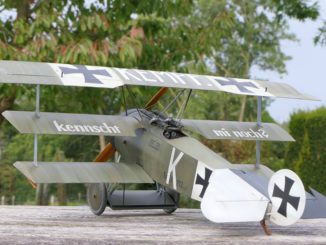
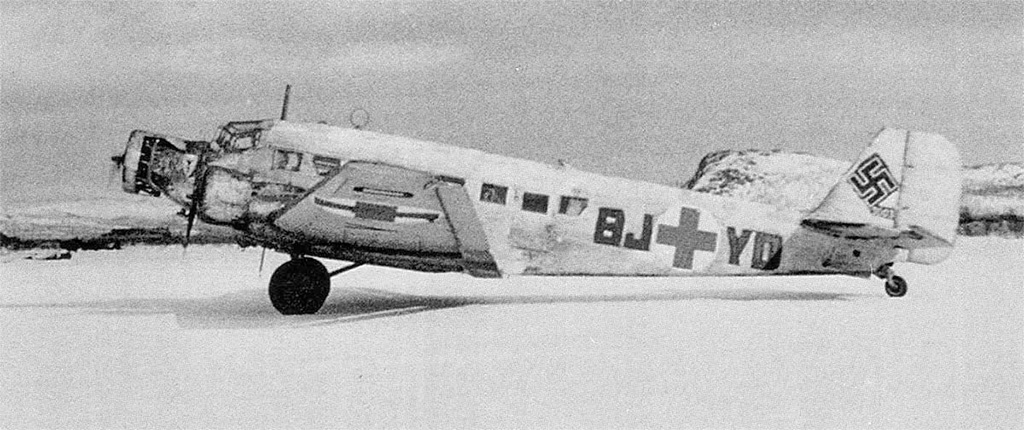
The Junkers Ju 52/3m (nicknamed Tante Ju (“Aunt Ju”) and Iron Annie) is a transport aircraft that was designed and manufactured by German aviation company Junkers.
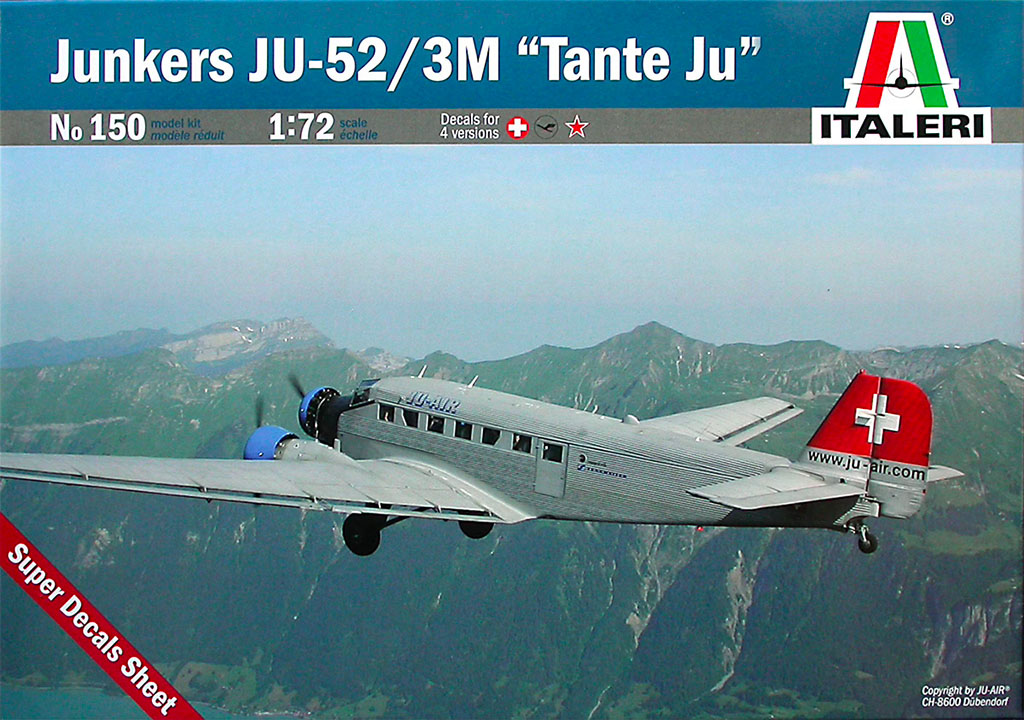
Development of the Ju 52 commenced during 1930, headed by German aeronautical engineer Ernst Zindel. The aircraft’s design incorporated a corrugated duralumin metal skin as a strengthening measure, which was very unusual at the time. The Ju 52’s maiden flight was performed on 13 October 1930.

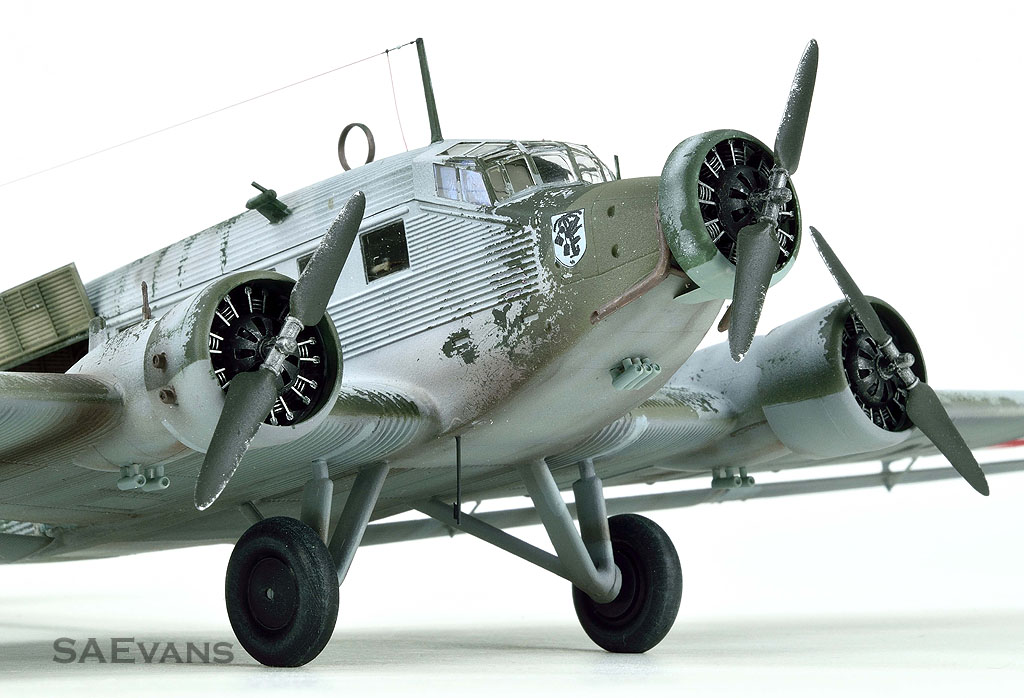
It was initially designed with a single engine, however, it was produced in quantity as a trimotor. The primary early production model, the Ju 52/3m, was principally operated as a 17-seat airliner or utility transport aircraft by various civil operators during the 1930s. Following the rise of Nazi Germany, thousands of Ju 52s were procured as a staple military transport of the nation. The Ju 52/3mg7e was the principal production model.

Hitler used a Deutsche Luft Hansa Ju 52 for campaigning in the 1932 German election, preferring flying to train travel. After he became Chancellor of Germany in 1933, Hans Baur became his personal pilot, and Hitler was provided with a personal Ju 52. Named Immelmann II after the First World War ace Max Immelmann, it carried the registration D-2600.

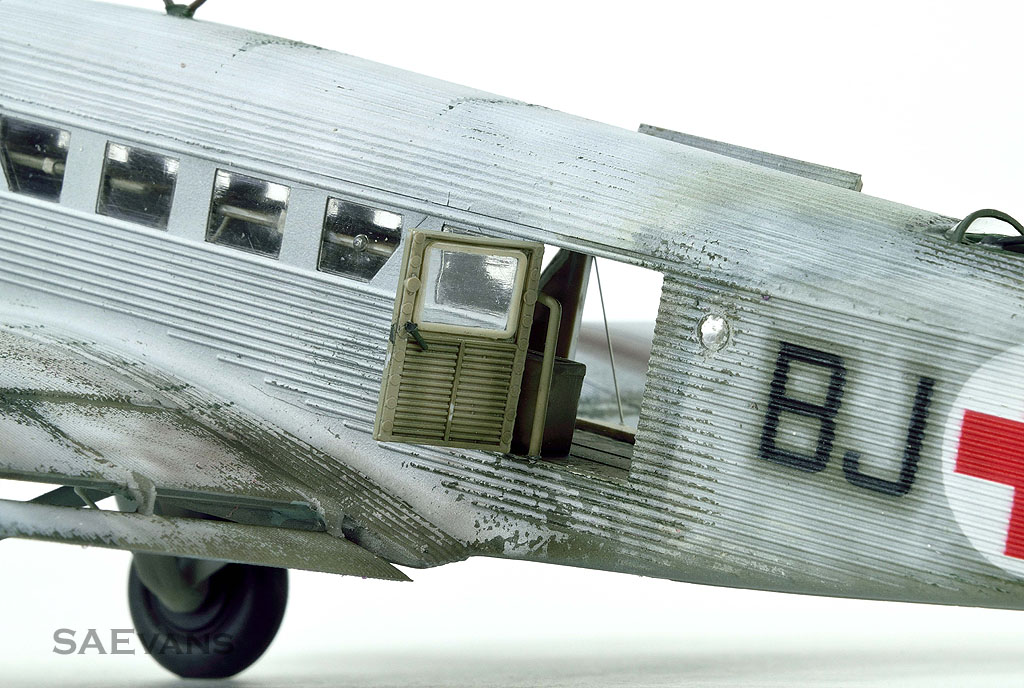
This ubiquitous transport that was the workhorse of the Luftwaffe, from the first day to the last, is one of the most recognizable aircraft in the world. With its agricultural engines and corrugated shed skin, everyone knows this amazing character of an aircraft.

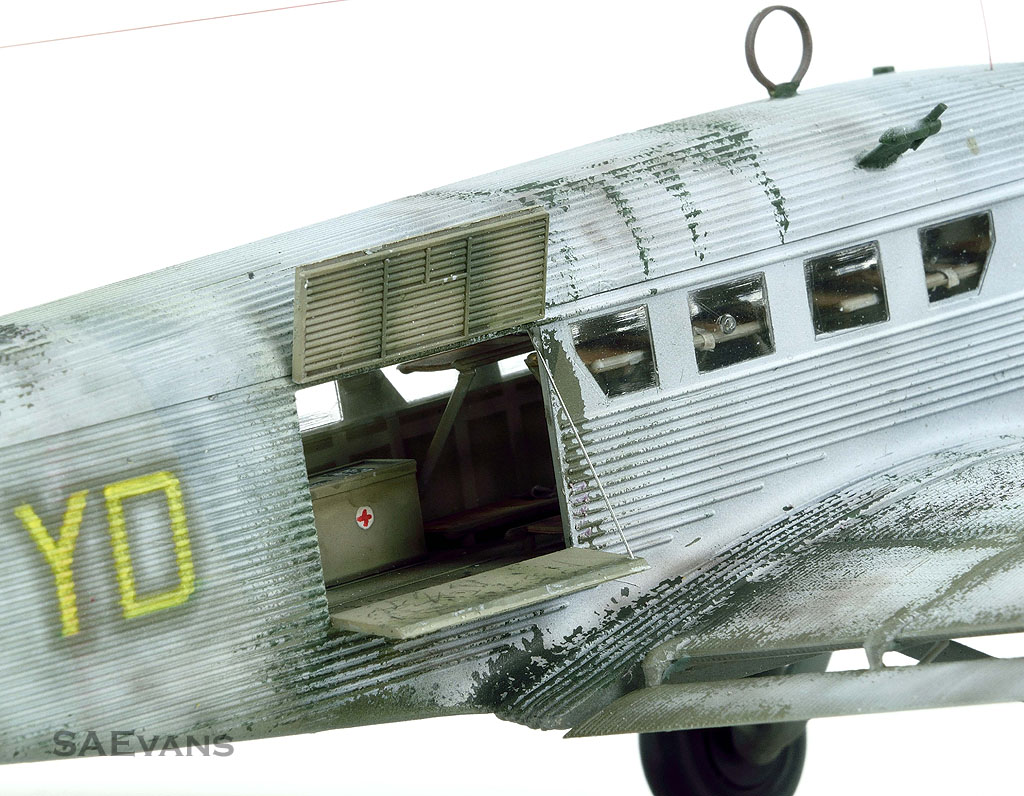
This kit from Italeri is old but it’s still a good one, with lots of positives in the slender box. Not only do you get a number of versions to do, but there are also some interesting color schemes, as well as plenty of figures on the sprues if you fancy doing a diorama-type thing.
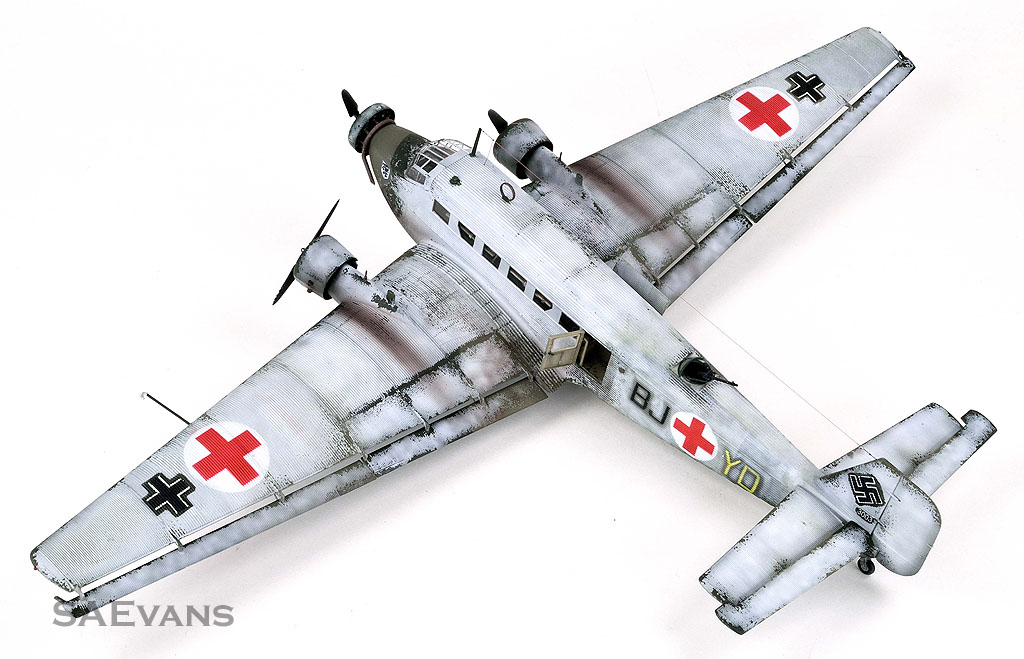
I was building this one for a friend in the Czech Republic and he specifically wanted a Hospital variant, so this was the perfect kit, as all the bits are in the box, including one poor soul on a stretcher.
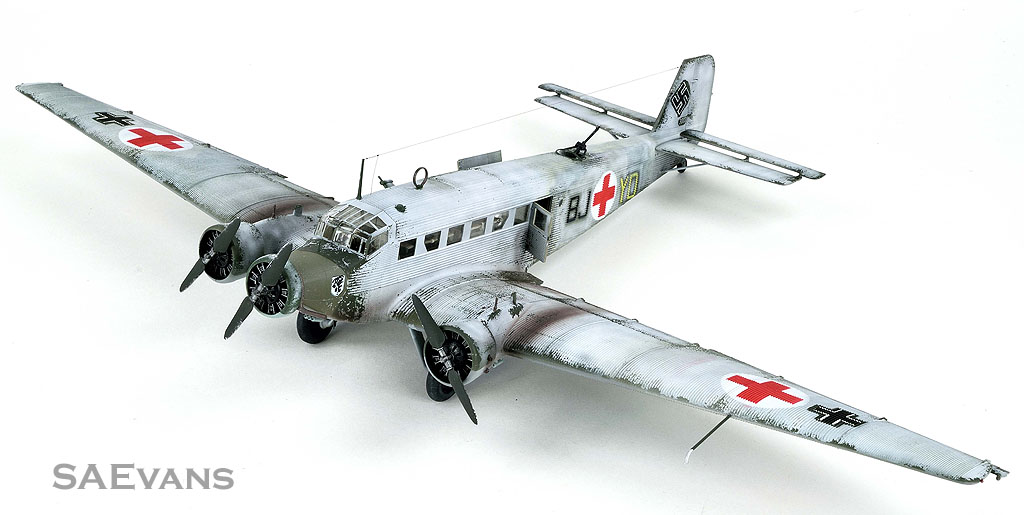
The detail is a little soft and almost non-existent for the cockpit but very little of that will be seen on the final build, so that’s not a big problem. However, the main cabin interior can be configured as the ambulance version by using the kit parts of stretchers and first aid kits.

Obviously, I added a few bits and pieces such as the open cabin doors and associated struts, along with restraints on the stretchers.
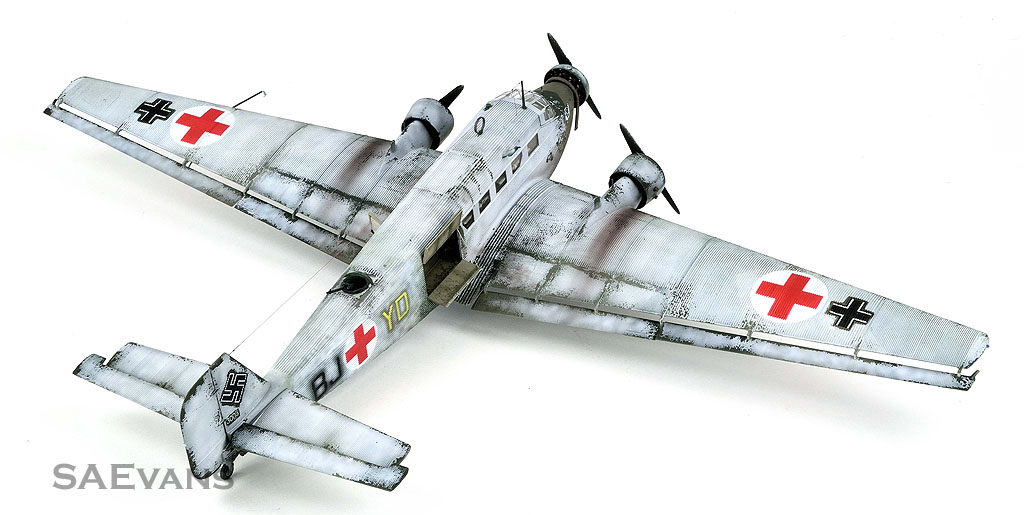
The external detail is really well done, with properly proportioned and molded corrugations in the skin as well as neatly done engines and undercarriage units. There are some tricky bits along the way, getting some of the smaller parts to fit where they’re supposed to but it looks like a Ju 52 when it’s done so there’s nothing much to complain about.
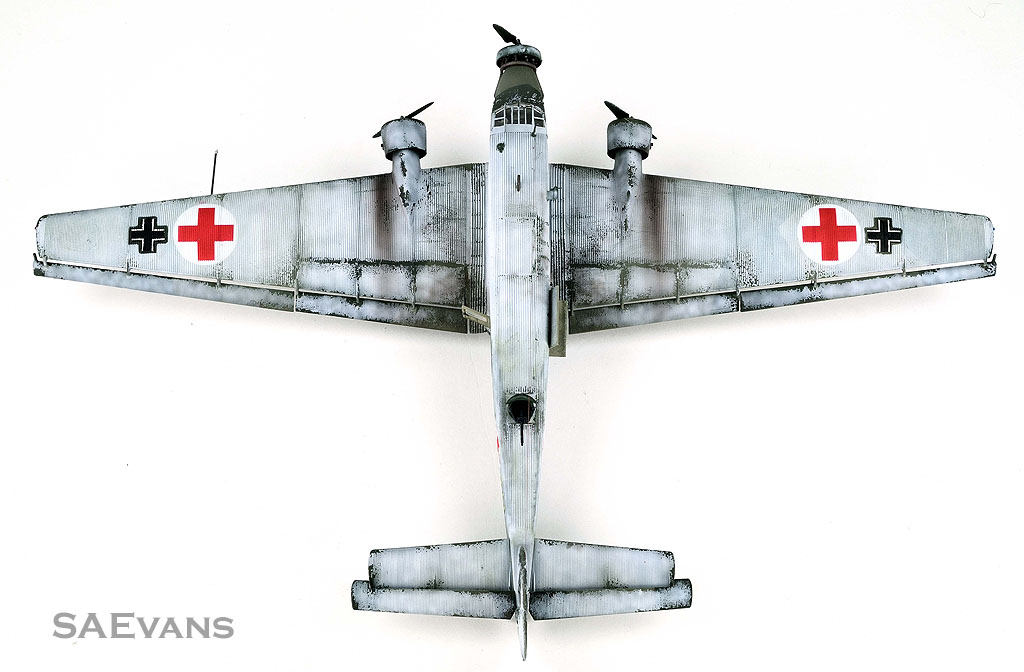
The paint job is a bit of a nightmare as doing these winter, white distemper, finishes is something I’m not too good at yet. Having said that, this one turned out ok so I can’t moan too much can I? The white is painted over a full camouflage job of RLM70/71 and then scraped and scrubbed off in places to give it a “lived-in” look.
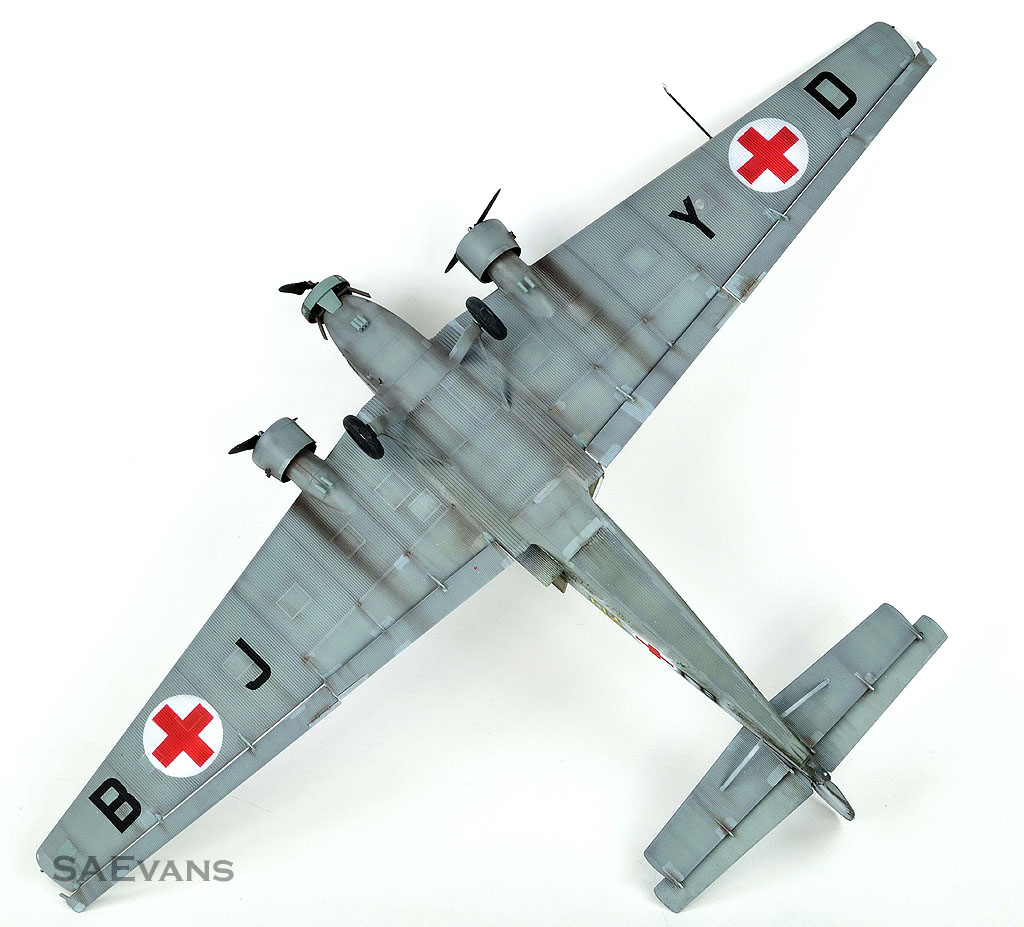
The markings are a complete mish-mash of kit decals, sprayed and aftermarket markings to get the final look and with plenty of weathering on show, this one looks like it’s had a hard life.

As an aside, I was asked why does this one still carries a machine gun if it’s a Red Cross aircraft? Well, at the time the Russians took very little notice of those crosses and carried on shooting them down. That’s not to say the Germans were blameless, because they frequently used the Ambulance aircraft as standard transports carting fuel and ammunition to the front lines.

Please Click Here to Donate and Help Keep us Pop-up Ad Free
Return to The Florida Pilot


